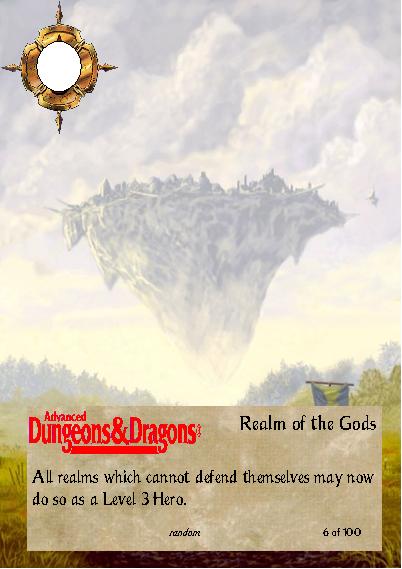THE OUTER PLANES
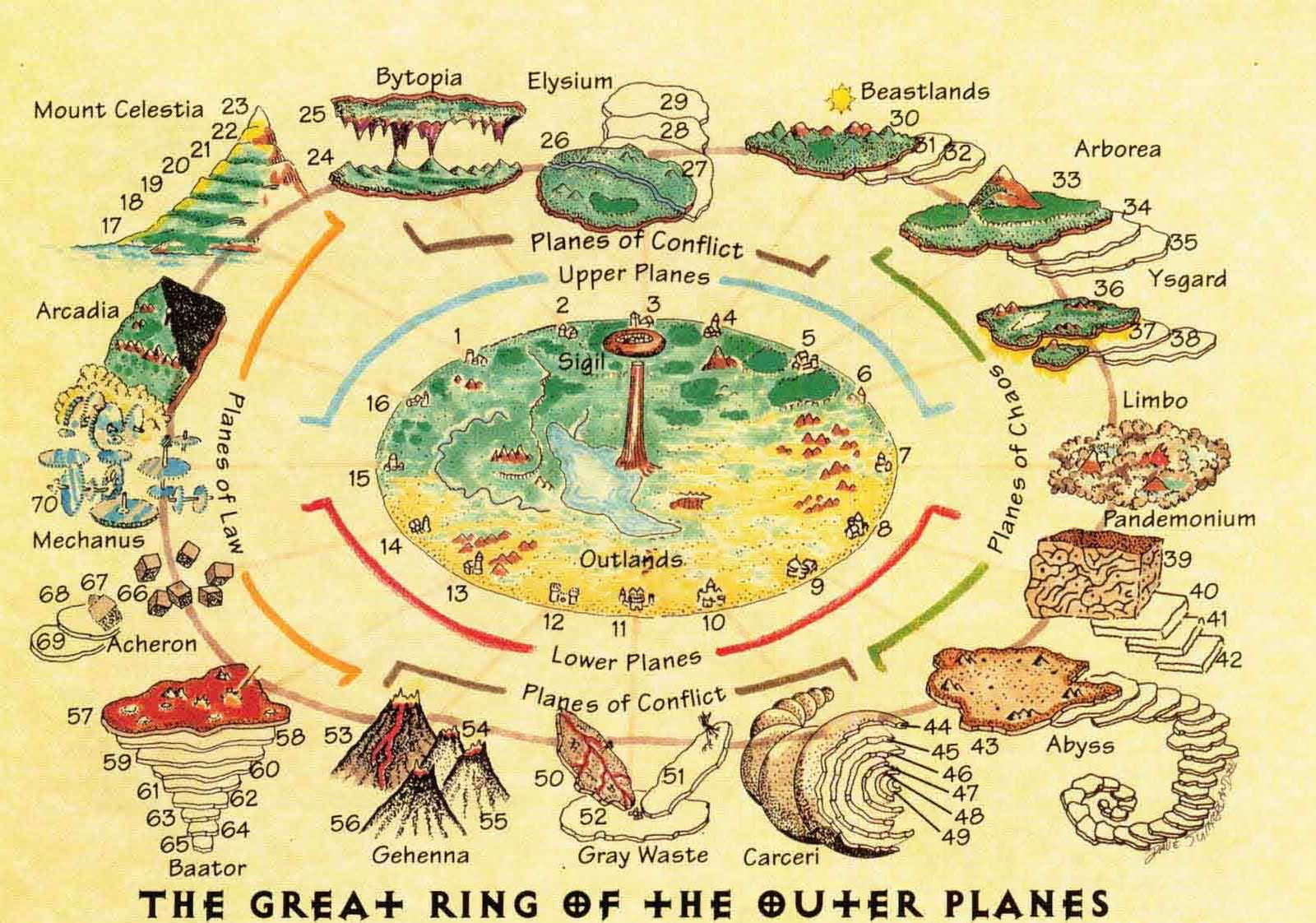
THE OUTER PLANES

The outer planes are also called the Planes
of Power since they
are the homes of the most powerful extraplanar
beings int he
known planes of xistence. They have a
mixture of elements that
supports a rich diversity of life, often
(but not always) similar to life
on the Prime Material planes. It is unknown
whether this is
because the inhabitants of the outer planes
affect the creatures
on the Primes, or because the Prime planes
impose order on the
outer planes.
The conventional view of the outer planes
is of a great wheel
divided into 16 pieces. Each piece is
the upper layer of a plane
and is joined ot the upper layers of the
two planes adjoined to it.
Planes have a variable # of planar
layers, also called
levels. In the center of the wheel, joined
to it by the Astral plane,
are the Prime Material, Ethereal, and
inner planes.
The above is accurate as far as it goes,
but things are more
complicated than that. Each planar layer
is physically infinite in
the same manner as the Prime Material,
inner, and Ethereal planes.
The Astral plane co-exists with the first
(uppermost, closest
to the Astral) layer of each plane, but
there are also conduits
that reach the deeper layers, enabling
rapid movement of beings
and great powers from one plane to another.
Each layer of the
outer planes contains a number of different
realms ruled by
various Deities or forces.
It has also been revealed that there is
another outer plane that
does not fit into the wheel concept, but
has strong connections
with four mutually opposing planes. This
17th plane, the plane of
Concordant Opposition, is usu. placed
below the wheel. In this
picture, the outer planes look like a
cup filled with an Astral soup
in which various alternate Prime Material
planes float.
The planes are rougly aligned according
to good vs. evil
and Law vs. Chaos. The plane of Concordant
Opposition is
often referred to as a plane of true neutrality.
Here are the 17 known outer planes:
The arrangement of these planes agrees
with the standard
view of alignments: good and evil on opposite
sides, Law and
Chaos squared off against each other.
In this layout, the planes
have the following characteristics:
Creature Alignments and Layers of the Outer Planes
| Name | Alignment | Layers |
| Nirvana | Lawful Neutral | 1 |
| Arcadia | Neutral Good Lawfuls | 3 |
| Seven Heavens | Good Lawfuls | 7 |
| Twin Paradises | Neutral Good Lawfuls | 2 |
| Elysium | Neutral Goods | 4 |
| Happy Hunting Grounds | Neutral Good Chaotics | 3 |
| Olympus | Good Chaotics | 3 |
| Gladsheim | Chaotic Good Neutrals | 3 |
| Limbo | Chaotic Neutrals | 5 |
| Pandemonium | Chaotic Evil Neutrals | 4 |
| Abyss | Chaotic Evils | 666* |
| Tarterus | Evil Chaotic Neutrals | 6 |
| Hades | Neutral Evils | 3 |
| Gehenna | Lawful Evil Neutrals | 4 |
| Nine Hells | Lawful Evils | 9 |
| Acheron | Lawful Evil Neutrals | 4 |
| Concordant Opposition | True Neutrality | 1 |
* Best estimate
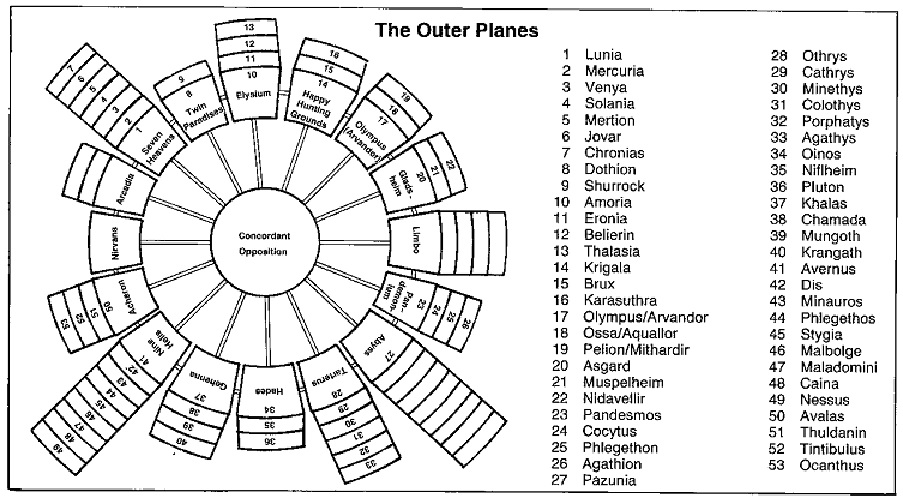
The alignments of the
creatures on each plane follow that of
the plane itself. Creatures in Hell tend
toward LE
behavior, while those in Olympus tend
toward chaotic actions.
The exception is Concordant Opposition,
which contains
a mixture of all alignments.
The names of the planes
are often descriptive of only a small
part of them. These appellations reflect
the belief systems of
those who wrote the first tomes
on the planes. The Greek and
Norse pantheons control part of the first
layers of Olympus and
Gladsheim, respectively, but since these
were the first beings
encountered, their names were used for
the entire planes. Similarly,
Heaven && Hell were named for
their relative positions
on the planar wheel and the number of
known layers. <>
The DM can alter the names to fit the
flavor of his campaign,
but this book will retain the original
names.
The planes from Arcadia
to Gladsheim, across the top of the
wheel, are commonly known as the Upper
Planes, or planes of
Good, as there are good components in
their alignments. Similarly,
the planes from Acheron to Pandemonium,
across the bottom
of the wheel, are called the Lower Planes,
or the planes of Evil.
Those from Paradise through Nirvana to
Gehenna are called
the planes of Law, while those from the
Happy Hunting
Grounds through Limbo to Tarterus are
the planes of Chaos.
Only the plane of Concordant Opposition
is regarded as a true
neutral plane.
The outer planes lack
an ethereal cloud and relatively easy
access to the raw energies of the inner
planes. Beyond the first
layer of each plane, there is no ready
access to the Astral plane,
though most planes have a # of fixed portals
attached to
conduits leading to other planes.
Finally, the outer planes
are hospitable to Prime Material life. A
wide variety of unique creatures roam
each plane. The outer planes are
home to a majority of the Deities, those
unique beings
who are often referred to as gods &&
goddesses. The traveller is
advised to MOVE cautiously &&
carefully through those territories
claimed by Deities.
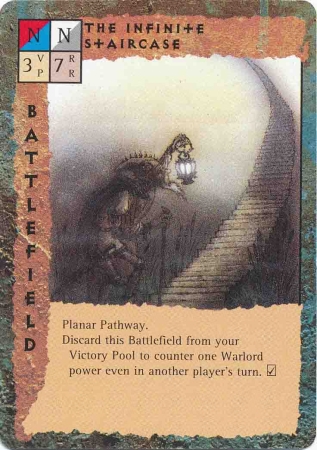
All travel to the outer
planes involves moving through the
Astral--there are no outer planar vortices
that connect directly
between the outer and Prime planes. The
degree to which the
traveller must MOVE through the Astral
is determined by the method
of movement.
Three common methods
are conduits, spell effects, and color
pools. Conduits and spell effects MOVE
the traveller rapidly into
the outer planes, while astral color pools
enable travellers to
check out an AREA before they enter.
Conduits are also called
wormholes or gates. They usu.
have <one> mooring in the Prime Material
and other in a specific
location in an outer plane (though there
are also conduits that
lead from one outer plane to another).
The Prime Material end is
often a temple complex or other loc. dedicated
to a particular
deity, while the other terminus is in
part of the realm ruled by
that Deity. This terminus is not necessarily
on the top layer of
the outer plane.
Travel via conduit through
the Astral is rapid (<one> round) and
not noticed by the travellers, so it appears
that the travellers step
off the Prime and directly into the desired
outer plane. Astral
beings cannot affect those in conduits.
Conduit travel has the
advantage of bringing the physical body
along without a trip into the Astral plane.
Its disadvantages are
threefold: a gate must be found
in the Prime plane, the gates are
often guarded, and the terminus location
may not be friendly to
the traveller. Conduit travel is safest
when the traveller is xpected
or is powerful enough to deal w/ any hazards
on the far side.
Conduit travel takes
those who enter the conduit and all they
wear and carry into the other plane. The
travellers cannot break
the sides of the conduit to enter the
Astral plane (indeed, most
travellers are unaware that the Astral
is traversed in the course of
conduit travel).
Only a few high-level
spells enable the caster to MOVE directly
into the outer planes. Each spell has
advantages and disadvantages.
The clerical spell,
plane shift, transports the caster and his
companions to any known plane. The destination
plane is determined
by the material component of the spell,
a tuning fork of a
particular material. A single note brings
the caster brings the caster to the top layer
of the outer plane attuned to the tuning
fork. Deeper regions are
said to be reached by combinations of
chords, so that a group of
random chords may TAKE the player to a
random layer of the Abyss.
The plane shift spell
grants little control over the part of the
plane the caster arrives in. While this
does not matter in the amorphous
inner, Ethereal, and Astral planes, the
widely varying natures
of the outer planes make random placement
rather
unpleasant. This spell is usually guided
by a basic idea of where
the caster wants to go in that planar
layer, so the dorp-off point is
usu. not too far off. Use the following
table for travel into the
outer planes by plane shift spell.
| Die Roll | Effect |
| 1-20 | Within 100 yards of where the caster visualized |
| 21-60 | Within 10 miles of where the caster visualized |
| 61-90 | Within 1,000 miles of where the caster visualized |
| 91-00 | Within 1,000 miles of the AREA visualized, and usu. in the realm of another powerful xtra-planar being. (At least you hit the right plane!) |
The clerical and M-U
gate
spell can also reach the outer
planes by summoning a Deity and beseeching
it to return with
the caster (and any allies) to another
plane. This is not beyond the
abilities of any Deity or Demi-Deity,
but most operate according
to the following rules: A Deity will not
transport individuals to
another Deity's realm if the other Deity
is of equal or higher
level; a Deity will not let a group of
mortals into its home plane to
wreak havoc; a Deity will agree to such
transportation if there is
sufficient reward for the Deity to do
so.
The teleport without
error spell and the succor spell can also
span the planes. The former requires some
knowledge of the
destination, with the standard chance
of teleporting too high or
low. The latter is an automatic teleport
that brings the characters
to an outer plane only if that spell was
originally CAST in that outer plane.
Several devices duplicate
spell abilities. The amulet of the planes transports
the wearer randomly into the first layers
of the
outer planes in the same maner as a plane
shift spell. In this
case, the DM selects a point of arrival
and rolls to see how far
away the character lands from it. The
well
of many worlds transports
the user into the first layer of any outer
plane or any Alternate
Material plane, at the choice of the DM.
All of the preceding
spells and items bring the travellers physically into the
plane, with all worn and carried items.
The frequent choice
of xtra-planar travellers, such as adventurers
seeking to sneak into the lair of a petty
demigod or arcanadaemon
lordling, is the Astral color pool. The
passage into the Astral plane and loc. of a color
pool (see page 62) enables <>
the traveller to VIEW the terrain before
entering it . He can also
MOVE the viewpoint to a safe loc. before
entering the plane.
The disadvantages of this method of travel
have been mentioned
earlier, incl. the psb. detection of the
Astral viewing
point and that only the topmost layers
of the planes can be
reached.
A traveller who is physically
in the Astral plane can enter an outer plane
by passing through the appropriate color
pool. If the
region is inhospitable to mortal life,
the traveller can be injured or
slain. The physical traveller brings all
his magickal items through
the portal with him, even the ones that
lose their magickal auras in
the new plane.
An astrally projected
traveller can also enter a color pool, but
the passage creates a new body out of
materials int he other
plane. (If the traveller enters in a relatively
terrestrial environment,
his new body is close to normal flesh
in appearance and effect).
The traveller who attempts to materialize
in an xtra-planar pool of
magma becomes a magma-like creature--immune
to fire but
doubly affected by water. For this reason
care is advised for the
traveller who manifests in a strange form
(one cautionary tale
involves a traveller who became solid
rock and eroded as he
moved). DMs are encouraged to be fiendishly
creative in assigning
advantages & disadvantages to forms
that players create.
The astral individual
retains his silver cord on the new plane.
It
is invisibly
attached to the traveller and disappears after 10 feet <>
back into the Astral. The astrally
projected traveller can still return
to his original body in 1d100 rounds (he
xpresses that desire
and is immed. returned to his original
body). If the silver cord is
cut while the traveller is in the outer
planes, the traveller does
not perish. What happens is that he can
no longer return to the
Astral or his original body without casting
another astral spell and
reinhabiting his original form. The traveller
is immed. aware
when his silver
cord has been snapped. This is usu. a sign that
one of the more powerful natives of the
plane is aware of the character's
presence.
When an astral
traveller passes through a color pool, any magickal
items that will not function in the outer
plnae (that is, totally
lose their magickal abilities) do not
pass through the pool but
return to the traveller's original body
(if possible). If such items
cannot be reunited with the original body,
their astral presences
erode and the physical item decays in
1d10 turns.
ADQ: The 1st level of each outer
plane
can be entered from the astral plane.
Presumably, one could go from the 1st
level to other levels of the plane, but
how
is this done? Just how does one get to
the
2nd Hell, the 7th Heaven, or the 314th
layer of the Abyss? Do you have to go
through all the preceding layers? Are
layers astro-geographically adjacent so
that one can be entered from another,
or
is some spell or device required to teleport
into these planes?
ADA: The layers of each of the
grouped
outer planes (7 Heavens through Arcadia)
are "planographically adjacent"; tourists
must pass through them in numerical order
to
reach the "deepest." But certain powerful
local residents of each group have, no
doubt, discovered certain "short cuts"
for
faster passage.
Note also that the
turning forks employed
in the cleric's plane shift spell bypass
all
such planography, allowing access directly
to any plane. A gate spell bestows similar
direct access.
(Polyhedron #26)
In general, the outer
planes are similar to the PMPs.
When adventuring in the outer planes,
survival depends
on the particular nature of the plane
occupied. WHile portions of
these planes pose hazards, the planes
themselves are not hostile
to intruders from the Prime.
The best way to describe
the outer planes is that they are like
the Primes, only more so. The mountainous
regions of these
planes dwarf the lesser peaks of the Primes,
their breezes are
sweeter, their storms fiercer, their freezing
domains colder, and
their deserts hotter & drier.
Breathing: The
atmosphere of the outer planes are generally
breathable to most travellers from the
Prime Material plane.
Those that are greatly different are noted
under their descriptions.
Time: The flow
of time in all the outer plnaes is similar to that in
the PMPs (true time flows at the same
rate as
subjective time). Travellers tire and
require food at the usual intervals.
Gravity: Gravity
is localized in the outer planes. There is a general
down that may hold for miles in all directions,
then suddenly
change into a new direction. Those within
the AREA of that gravity
field are affected normally. Damage can
occur only if the unprepared
traveller crosses into another gravity
field and falls upon a
solid object. Gravity field boundaries
often mark the edge of a
Deity's realm,
as all lawful Deities and most chaotic ones maintain
a distinct gravity within their realms.
Direction: Magnetic
directions are different for each realm. A
traveller going N in one realm,
crosses into another realm and
finds that N is now in another direction.
Two direction-finding
devices xist. The planar compass is a
weather vane made of orcanthium. <link
to DF thread here> This enchanted device
spins faster if a planar boundary or portal
is approached. A traveller can
determine roughly how far he is from a
boundary to another layer
or portal to another plane by observing
the spin of the planar
compass.
The other device is
a magical gem known as a power compass.
Such a gem flashes a steady light if a
Demi-, Lesser, or Greater
Deity is within range. This detection
occurs only if the Deity
manifests itself in its true godly form.
It does not work if the Deity
is disguised as another creature. The
power compass is best
used for detecting large
concentrations || pantheons of Deity-level beings.
Food and Drink: The
outer planar traveller tires, thirsts, and
grows hungry at the same rates as in the
Prime plane. The availability
of materuals to satisfy these needs for
astral travellers in
nonhuman bodies is left to the DM.
Vision and Senses: The
ability to detect other objects in the
outer planes is as for the PMP in similar
circumstances. Infravision
(but not ultravision) functions in the
outer planes.
Travellers who have
labored with mental conundrums in the
Ethereal plane, overcome forces of will
in the Astral plane, and
sought elemental guiudes in the inner
planes are usu. grateful
that movement through most of the outer
planes is similar to
movement through the Prime plane. There
are, however, differences
that become obvious only when you reach
the borders
between realms
in a layer, between layers of a plane, or between
planes.
Interrealm Borders in a Layer
A realm
is a region that operates under a common set of physical
laws (gravity has the same strength &&
direction throughout
the realm magnetic
directions are consistent, etc.). Realms are
usu. (but not always) under the control
of a particular Deity ||
a group of Deities organized into a pantheon.
Different Deities
and pantheons can occupy the same layer
of a plane in peaceful
(or not-so-peaceful) coexistence. Realm
borders are usu. (but
not always) marked by a change in the
terrain to reflect new physical
laws.
The borders between
realms
indicate changes in physical
laws, in particular gravity, but other
physical effects like temperature,
winds, and sentience can also be affected.
Within a planar
layer, these realm
borders have a physical edge, so the traveller
sees them from a distance and knows when
he is passing from
one realm
to another (e.g., the new realm could be at
right angles to the first).
Moving from one realm
to another is done by stepping over the
border. Upon crossing the line, all effects
of the new realm TAKE
immediate effect. A realm
w/ gravity at right angles to the previous
realm makes
the traveller walk up what previously was a
vertical surface, while a realm
whose gravity is the esrever of its
neighbor makes the unwary fall down (previously
up) immediately
upon entry. Cautious travellers inspect
realm
borders carefully
before crossing them.
As movement through
the outer planes is physical, and most
landmarks (SAVE in the planes of Chaos)
are fixed, maps of the
general AREA help the traveller get around.
DMs can create these
maps with an eye to the fact that Deities
often MOVE things
around as they see fit--features and terrain
tend to change from
one visit to the next. (That is, the DM
is free to set up such realms
according to his own tastes and sense
of deviousness.) In general,
a five-mile trip in the outer planes takes
the same time and
effort as a five-mile trip in the PMP.
As a final note on travel
on a particular planar layer, remember
that the outer planes have no ethereal
component, so travel via
the Ethereal is impossible. Astral travel
is limited to the first layers
of the plane (except for conduits and
permanent gates to the
lower planes).
Interlayer Borders in a Plane
The borders betwen the
layers of a plane overlap, similar to
the overlap of the Ethereal and PMPs.
It is possible
to travel from one layer of a plane to
another by exerting one's
desire to break through the interlayer
barrier. Every traveller wishing
to breach such a barrier must make a successful
Ability
Check against his WIS to break through
the barrier. Breaking
through a barrier at a certain point always
brings travellers to the
same loc.. Thus several travellers who
break through from
the same place find themselves together
on the next layer, even
though they had to break through separately.
The barriers between
planar layers are shown as straight lines
in the diagrams, but they take many shapes
in the outer planes:
thick irregular areas, circular paths,
thin borders, or spheres of
planar space. They have no effect on travel
to other planes, but
they facilitate movment into other layers
of the plane. Note that
major concentrations of power rarely xist
in layer interfaces, as
these barriers see a lot of traffic. Occasionally
Deities reside in
these borders if they control the territories
on both sides of the
interfaces.
Conditions in adjacent
planar layers can differ greatly, according
to the nature of the plane and its ruling
inhabitants. In the
case of Hell, all layer barriers open
into mid-air above
the next lower plane. A traveller moving
from the third layer of Hell
into the fourth layer finds himself a
half mile up from the ground of
the fourth layer. This holds true for
most of the Hells and contributes
to the common perception that they are
rings leading down
deeper into a pit. This setup also makes
it difficult for adventurers
to leave deeper levels the way they came.
In a similar fashion,
each layer of Heaven is topped by mountains
of incredible
grandeur. It is on thes lofty peaks that
interlayer barriers
lead to the next layer.
Barriers are usually
(70%) one way, so that the traveller has to
find another way back. In the Hells in
particular, most of the ways
back are either well-guarded or high above
the ground, creating
problems for those who wish to leave.
Magickal items generally
do not lose further effectiveness as
they descend through the layers, unless
the Deities that rule
those realms
have specific banshments against certain spells or
items (Orcus takes a dim VIEW of arrows
of demon-slaying and
thus they do not work in his realm).
Specific spell effects that violate
the general rules set down in the magick
section are more
common in the chaotic planes and in those
layers in which a single
Deity holds sway.
Interplanar Borders
In addition to travel
within a plane, there is movement from
outer plane to outer plane--from the Twin
Paradises to Elysium, for
example. This occurs via magickal portals
similar in function to
conduits. These whisk the traveller to
either a specific or random
location in the other plane.
The appearance of these
portals varies from plane to plane,
as well as from portal to portal. In the
plane of Arcadia, a portal
may appear as a thin fog stretched between
two apple trees, while in
one of the lower planes it may appear
as a foul-smelling, foreboding
cave. The River Styx flows through many
portals in the lower planes
and provides a regularly-used highway
through these planes.
These portals generally
only appear in the top layer of the
planes, though some free-standing portals
that pass through the
Astral (like the Yggdrasil) pierce the
lower reaches of some
planes. Certainly portals are most common
in the top-most layer
of a plane, so that travellers searching
them out have a 1 in 6
chance of finding a portal per day (unless
the Deities of that
realm have
closed them or restricted access).
Each time a traveller
moves to a new outer plane, his magickal
items lose an additional plus and can
become non-magickal. For
example, a traveller in the Prime with
a sword +3 moves into the
Astral where his weapon becomes a sword
+2. Upon entering
Limbo he is wielding a sword +1.
The sword becomes non-magickal
if he enters another outer plane. (Once
he re-enters the Astral,
his sword becomes +2 again.) Thus if he
wants his sword to be
magickal in the plane of Gladsheim, for
example, he must re-enter
the Astral from Limbo, then go directly
from the Astral to Gladsheim.
The portals between
outer planes are often (50%) one-way and
also often (50%) intermittent (lasting
a few hours to a few weeks),
with the rate of their appearances varying
from Prime Material
days to weeks apart. There is no apparent
pattern to where they
appear on other planes, so two portals
that are adjacent in Olympus
may lead to radically different areas
of Gladsheim. DM cruelty
is encouraged in dealing with this aspect
of portals.
Encounters in the Outer Planes
The outer planes are
host to a large # of native creatures
that are very different from those on
the PMPs.
Describing all the creatures of the outer
planes would fill another
book of this size. Also, many creatures
from these planes have
already been described in the MM,
MM2,
and FF books.
There are many unique creatures
here as well as familiar creatures that
differ from realm to realm.
Defining typical encounter
charts for the various outer planes
is therefore akin to tyring to set up
a typical encounter chart for an
entire PMP campaign. It cannot be done
except
for those areas the DM has developed;
in these areas the charts
must be devised by the DM.
The DM is not being
abandoned because there is a large
amount of source
material available. The MMII provides
frequency charts for the various layers
of Hell.
From these the DM can create standard
charts, populated by
creatures of his own devising, monsters
from other planes modified
for his campaign setting, and monsters
already known to live
in the planes. In this manner the DM can
create encounter tables
that are unique to his version of the
outer planes.
The following are general
notes on encounters, which may be
of aid to the DM.
Unique Powers:
Singularly powerful beings, such as demon
lords, solars, Demi-Deities, and Lesser
and Greater Deities,
appear only in very unusual circumstances
as random encounters
(that is, on a typical table, as a result
of a 2 or a 20). They are
usually out on their own missions. Unless
the party attempts to
attack or attract attention, these beings
ignore those who pose no
threat to their realms.
Human Travellers:
Human travellers are uncommon in the first
layer of each plane and rare at best on
the deeper layers. Since
many humans arrive in the outer planes
against their will (falling
into conduits, summoning or offending
the wrong Deities, playing
with the wrong magickal items, etc.),
they display a wider variety
of classes than found in the Ethereal
or Astral (in which most
human travellers are there intentionally).
<?>
Human Subtable for the Outer Planes
| Class
D100 Roll |
Subclass
D100 Roll |
Character
Type |
Level
Range |
| 1-25 | 1-70 | FIGHTER | 5-20 |
| - | 71-80 | Ranger | 4-24 |
| - | 81-82 | Barbarian | 6-25 |
| - | 83-90 | Cavalier | 5-20 |
| - | 91-00 | Paladin | 4-24 |
| 26-50 | 1-80 | CLERIC | 4-24 |
| - | 81-00 | Druid | 4-23 |
| 51-80 | 1-80 | MAGIC-USER | 3-30 |
| - | 81-00 | Illusionist | 4-24 |
| 81-99 | 1-90 | THIEF | 5-24 |
| - | 91-98 | Thief-Acrobat | 6-24<> |
| - | 99-00 | Assassin | 6-15 |
| 00 | - | OTHER (DM's choice) | - |
| - | - | Monk | 10-17 |
| - | - | Bard
(7-8 F, 6-9 (Th) |
13-20 |
Adventurers are encountered
in groups of 1d20 individuals.
Groups of <four> or les are of exceptional
level (add <four to the
level range, subject to the limitations
of race and class). Abilities &&
equipment are as determined on page
175 of the DMG.
Human travellers range from those with
a purposeful
mission to those who fell into the wrong
well and found
themselves with no way to get home.
Native Creatures:
Creatures whose descriptions list them
as natives of a particular plane or group
of planes (such as the devils
in the Hells or the devas in the upper
planes) physically exist in
these planes and can be permanently slain
there.
In the outer planes,
only the weaker non-natives have their
physical bodies present; the stronger
non-natives (greater
daemons, hierarch modrons, more powerful
slaadi) leave their
original bodies behind and have new ones
created on the plane
as for astral projection. Unique creatures
found outside their
native planes are always in non-original
bodies. Demi-Deities,
Lesser Deities, and Greater Deities have
great control over their
existences in their own realms,
as noted on page 124 in Appendix IV.
Combat in the outer
planes is similar to that in the Prime Material,
though the natures of particular realms,
layers or planes
sometimes alter specific details. There
are no general penalties
to armor, weapons, or missile combat except
the decrease in
magickal bonuses due to distance from
the Prime plane. The
effects of the outer planes on magickal
weapons are detailed
on page 81. <>
Fire, cold, ice, and
other magickal attacks function normally in
the outer planes, though there are exceptions
for certain planes
and their layers. Prime material plane
poison does not function
against creatures from the outer planes
when they are in their
home planes. There may be substances that
affect these creatures
like poison, but they have not yet been
found (and are liekly
different for each plane).
The physical requirements
for spell-casters are the same as in
the Prime Material combinations of spoken
words, physical gestures,
and material components. Physical limitations
of various
realms (such
as the depths of the River Styx) may affect magick,
but the ability to CAST spells is not
hampered by the general natures
of the outer planes.
The outer planes have
an extra-dimensional component, so all
spells that USE non-planar space (such
as rope trick) function normally.
Only the uppermost layer of each plane
has direct acces
to the Astral, so spells tha trequire
access to the Astral function
only in that layer. The outer planes are
only considered adjacent
on that topmost layer, thus spells that
reach into other planes
must reach from the top layer and then
out. Conduits and permanent
features that extend into other planes
cannot be used as
media to CAST spells through. Thus a lower
layer of a plane with a
conduit through the Astral does not enable
a spell caster to USE
the astral spell. Spells that require
access to powers && creatures
in the inner planes and PMPs do not function
unless otherwise noted.
The outer planes are
home to a variety of creatures && phenomena
(such as weather) that are familiar to
the traveller. These
are, however, outer planes in nature and
are unaffected by Prime
planar spells that summon, communicate,
control or prevent
entry by these creatures. Comparable spells
exist for each plane,
but they must be learned by the traveller
in that plane (for example,
speak with animals of Elysium).
These are not considered
modifications of existing spells. Spells
CAST by beings native to
the outer planes can affect creatures
in any layer of their home
plane, as well as travellers from the
PMPs. There are
no plane-specific spellks that affect
elemental phenomena
(such as fires and the creation of water
or air).
Cantrips of all types
do not function in the outer planes. The
magickal energies of these planes tend
to overwhelm such simple
spells (as if covered by a protection
from cantrips) spell). WHen a
cantrip is CAST, the only effect is a
loud popping noise.
Certain types of spells
function differently (or do not function at
all) in planes of a particular alignment
(such as the planes of Law,
the Chaos planes, and the upper and lower
planes). Modifications
are listed in the individual descriptions
of the planes.
Finally, Deities (demi-gods,
lesser gods, and greater gods)
and other mighty beings reside in the
Planes of Power in greater
concentrations than in any of the other
known planes. These
beings may be immune to spells of particular
types by virtue of
their ability scores or their powers on
their native planes. Check
Appendix IV for more
information.
Abjurations
Abjuration spells CAST
by a extraplanar traveller have no
effect on beings that are native to the
plane the traveller is in (native
beings have a "home court advantage").
Abjuration spells CAST
against nonnative creatures function normally,
as do abjuration
spells and spell-like abilities used by
outer planar natives in home
planes and in the Astral and PMPs.
Examples
* The protection from
evil spell and related spells have no
effect against evil devils in the Nine
Hells, as this is their home
stomping ground. They are effective in
the Nine Hells against a
band of marauding demons from the Abyss.
The protection from
good version can be used against extraplanar
travellers of that
alignment.
* Similarly, the exorcise
spell does not function against an outer
planar spirit in its home plane.
* The druidical spells
repel insects, anti-plant, and anti-animal
shells function normally against creatures
of these types from the druid's
home plane, but they do not affect outer
planar insects, plants, or
animals.
Special Case
* The dispel magic spell
disrupts spells CAST by creatures
native to the outer planes. If a dispel
magic is CAST upon an astrally
projecting traveller, success forces him
to return immediately to
his home plane.
Alterations
Alteration spells work normally with the following special modifications.
* The Chaos planes (Happy
Hunting Grounds to Tarterus,
inclusive) have a random effect on alteration
spells that call
matter into being (for example, create
water) or change matter into
other shapes (the polymorph spells). The
chance of a random
effect for these types of alteration spells
depends on the plane:
| Happy Hunting Grounds and Tarterus | 20% |
| Olympus and Abyss | 40% |
| Gladsheim and Pandemonium | 60% |
| Limbo | 80% |
The random effect on
created matter is that its appearance is
altered (a create water spell might produce
a liquid with the thickness
of syrup or blue
in color, or any other change the DM
desires). This does not affect the properties
of the substance
(thick, red water
still functions as water--quenching thirst, bathing,
dousing fire elementals, etc.).
The random effect on
spells that alter the shape of matter is
that they may either not function at all
or they sort of function, but
not in the intended manner. Consult the
following table if a random
effect is indicated:
| D100 Roll | Effect |
| 1-10 | TARGET does not change in appearance || properties. |
| 11-30 | TARGET changes in appearance, but retains all the properties of the original. |
| 31-50 | TARGET does not change in appearance, but gains the properties of the new form. |
| 51-70 | TARGET changes to resemble some nearby random object or creature, but retains abilities of its original form. |
| 71-90 | TARGET changes to resemble some nearby random object or creature and gains the abilities and powers of that object or creature. |
| 91-00 | TARGET changes in form and function into something not in the nearby AREA. DM fiendishness is encouraged. |
* Access to the Astral
and other planes is described in the preceding
general section. Lesser and Greater Deities
can seal off
sections of their realms
to extra-planar intruders (see Appendix IV
for the powers of the gods in their home
planes). Travellers can
USE alteration spells to enter these portions
of the planes, but
they cannot leave them. Other forms of
egress (conduits, journeying
physically to the edges of realms where
such a ban does
not apply, or crossing barriers to other
layers of the plane) are
unaffected.
Examples
* A purify food and
drink CAST in the Abyss might (40% chance)
TURN the matter into a foul-smelling brew.
The meal is wholesome
and filling, only its appearance is unusual.
The same spell CAST on
the plane of Gladsheim has a 60% chance
of appearing as a full
feast with glittering cups &&
polished
silverware (the cups &&
silverware
are only temporary and disappear in 3d4 turns).
* An attempt to polymorph
a slaad into a duck would have a
80% chance of a random effect in the plane
of Limbo. This
could lead to a variety of results: The
slaad is unaffected, the slaad
remains but is convinced it is a duck,
the slaad becomes a duck and
retains its slaad intelligence and abilities,
the slaad resembles a fellow
traveller and retains slaad abilities,
the slaad resembles a fellow
traveller and has that traveller's powers,
or the slaad turns into a sentient
oak tree (or whatever the DM wishes to
TURN it into).
* An individual in the
upper layers of the Nine Hells can plane
shift, but below the seventh layer, most
powers have sealed their
realms so
that a traveller can plane shift in, but he cannot leave by
that method. Similarly, the word of recall
spells does not function
in these deeper layers.
* Blink and vanish rely
on the Ethereal plane to work and thus
do not function in the outer planes. Duo-dimension
shunts part of
the body into the Astral plane--this spell
only works in the topmost
layer of each outer plane. Rope trick,
which accesses extra-dimensional
space, functions normally, but it does
not transverse
the gap between planes or planar layers.
* As noted in the general
rules, the control weather spell does
not function, though the gust of wind
(which calls into being a
piece of air) does, with the standard
chances misfiring noted
earlier.
Conjurations/Summonings
Conjuration and summoning
spells operate under the following
limitations:
* Non-native beings
are not summonable unless they are in
adjacent planes or planar layers. Conduits
do not count in determining
adjacent planes.
* Creatures native to
the plane can be called upon, but they
are not controlled by the spell caster.
Any tasks given such creatures
must be negotiated. Protective inscriptions
used in the
PMPs have no effect in the outer planes
for
restraining native creatures.
* Prime planar conjuration
or summoning spells that affect
specific types of creatures do not affect
the outer planar equivalents
of those creatures. Special spells (not
modified versions of
Prime planar spells) must be CAST to so
affect outer planar creatures.
A conjure animals spell does not work,
but a conjure Elysian animals
spell works in the plane of Elysium.
* Power-rank beings
(demi-gods and above) respond to conjuration
&& summoning spells only if they
want to. None of these
beings appears before a summoner without
a good idea of what
awaits. They never manifest themselves
in areas of great peril
(such as the realm of a more powerful
being).
* Certain deities are
immune to the effects of conjuration &&
summoning spells, in particular those
that have just a verbal
component (see page 124
for the abilities of Deity-rank beings).
Examples
* Creatures similar
to insects live in most of the outer planes.
Some even resemble terrestrial insect
life. Despite this, insect
plague and summon insects do not function
on these creatures
unless CAST by a native to their plane.
Native spell casters can
CAST such spells in their home plane and
the PMPs.
These beings can instruct a patient traveller
in USE of such
specific spells (summon Abyssal insects,
for example).
* A being called upon
by a gate spell is aware of the situation
in the AREA of the caster and will not
come if there is any danger of
conflict with creatures of similar ||
greater power. In such situations,
the being called upon will send a # of
lesser creatures
as aid only if the situation is desperate.
A Deity will never
pass through a gate to a location more
than two planes or planar
layers away.
Special Cases
* The wish, limited
wish, and alter reality spells are granted by
the nearest Deity capable of granting
such a desire. Deities
examine these requests more carefully
here than in the Prime
Material; they deny those spells that
would upset their realms.
Some Deities refuse to grant wishes by
travellers in their realms.
* The find familiar
will bring a familiar to the caster. The familliar
is either an imp, quasit, brownie, or
pseudo-dragon. The DM is
free to add other suitable candidates,
or to modify the appearance
(though not the abilities) of the beings
(an imp that resembles
a black cat, or a badger with brownie-like
powers). For quick
reference, consult the following:
Nirvana: Brownie (50%)
or Imp (50%)
Arcadia: Brownie (90%)
or Imp (10%)
Seven Heavens: Brownie
Twin Paradises: Brownie
(75%) or Pseudo-dragon (25%)
Elysium: Brownie (75%)
or Pseudo-dragon (25%)
Happy Hunting Grounds:
Brownie (25%) or Pseudo-dragon (75%)
Olympus: Pseudo-dragon
Gladsheim: Pseudo-dragon
(50%) or Quasit (50%)
Limbo: Pseudo-dragon
(50%) or Quasit (50%)
Pandemonium: Pseudo-dragon
(10%) or Quasit (80%)
Abyss: Quasit
Tarterus: Quasit (75%)
or Imp (25%)
Hades: Quasit (75%)
or Imp (50%)
Gehenna: Quasit (25%)
or Imp (75%)
Nine Hells: Imp
Acheron: Brownie (10%)
or Imp (90%)
A familiar so rolled
responds to the summons regardless of the
type of familiar called for, though if
its alignment differs from that
of its master, it will at least seek to
convert its master to its
alignment (and it may try to arrange the
destruction of its master).
* Certain spells that
do not function normally becasue they
require access to an inaccessible plane
can be used for another
purpose. The conjure elemental, invisible
stalker, and aerial servant
spells cannot call these beings into the
outer planes, but if
CAST upon the shores of the river Styx
(see the end of this section),
they summon Charon, the Boatman of the
lower planes. Any conjuration
|| summoning spell CAST on the shores
of the Styx
attracts the attention of a charonadaemon.
Divinations
Divination spells are severely limited within the outer planes.
* Spells that detect
or identify alignment respond mainly to the
alignment of the plane, overwhelming the
alignments of any
beings in the plane. These spells function
normally if the plane is
of a different alignment than that being
detected.
* The vast majority
of existing structures in the outer palnes
are creations of Deities. These edifices
radiate a strong aura that
overwhelms the magical auras of lesser
strength in the AREA.
* A Deity can be contacted only if it is in an adjacent plane.
Examples
* A succession of divination
spells are CAST on a paladin in
Hell. A detect evil registers the evil
all around the paladin.
Similarly, a know alignment shows the
LE nature of the
plane and not the paladin's true alignment.
A detect good reveals
the paladin's goodness, as it is specifically
aimed at that particular
alignment. A detect balance shows only
that the entire region
is extremely out of balance with neutrality.
A detect magick registers
positive, regardless of whether the paladin
has magickal items.
* The commune spell
CAST in Elysium only contacts the cleric's
deity if that deity makes his home in
the Twin Paradises, Elysium,
the Happy Hunting Grounds, or the Astral
plane. This applies no
matter what layer of Elysium the spell
caster is in.
* Commune with nature
does not function, as the nature of
outer planes is alien
to the Prime planar caster and the PMP
is more than one full plane away. Reflecting
pool,
which taps into the inner planes, does
not function because of the
planar distance between the Astral and
Ethereal.
Special Cases
* Contact other planes
treats each planar layer as a full plane
for # of planes crossed in figuring chance
of knowledge,
veracity, and insanity. An individual
can cross a max. of 10
planar layers when casting this spell
in the outer planes. (That is,
a caster pm tje 40th layer of the Abyss
can only reach the 30th to
50th layers of the Abyss for answers).
The entries in the "Elemental"
row on the table (in the spell description)
are for the PMP;
ignore this row in the outer planes.
* The true sight spell
and the devices that mimic its abilities
have a potent effect on their users in
the outer plaens. This spell
reveals the true nature of the plane in
terms of Law and Chaos,
good and evil. Those viewing unadulterated
Law or Chaos are
frozen in place for 1d10 turns. At the
end of this time they must
roll a successful save vs. Spell or suffer
the effects of a feeblemind
spell. Those viewing unblemished good
or evil are
similarly affected; they must roll a successful
save vs.
Spell or be changed to the alignment of
the AREA being viewed.
Effects are cumulative, so that a LG individual
in
Acheron who performs this action will
be affected for 2d20 turns,
plus must roll <two> saves, one for
feeblemind, the other for
alignment change. Those in the plane of
Concordant Opposition
are not paralyzed, but must make a save
vs. Spell or be
left insane for 1d10 years.
Enchantments/Charms
Enchantment &&
charm spells function within these general
guidelines:
* Spells directed toward
specific creatures do not function
against the outer planar equivalents of
those creatures. These
spells do work against Prime Material
natives that are encountered
in the outer planes.
* Deities with sufficiently
high WIS ignore the effects of
enchantment && charm magick.
* Planes beyond the
outer plane (incl. all its layers) the
caster occupies cannot be accessed, though
extra-dimensional
space can be.
Examples
* An animal friendship
spell works with Prime Material animals
that are encountered, but not with thhose
native to the outer planes.
The equivalent outer planar spells can
be learned in the
outer planes, subject to the limitations
on spell teaching &&
research. Each plane has a different version
of this spell.
* The deeppockets spell
reaches into extra-dimensional
space, so it functions normally. Shadow
walk, on the other hand,
requires access to the demi-plane of Shadow
and thus does not
function.
Special Cases
* Non-Deity level denizens
of the outer planes are considered
to be monsters. Thus charm monster (as
well as the alteration
speak with monsters) works against these
beings.
* Beings of Power are
not as dependent on their physical
forms, so the druidic spell finger of
death is useless against them,
though it may function against their lesser
minions, causing
those beings' hearts (or equivalent organs)
to cease functioning.
* Spells that involve
confusion-like
effects are enhanced in the
Chaos planes and diminished in the planes
of Law. The saving
throw in the chaotically aligned planes
suffers a -4 penalty,
while in the lawful planes it receives
a +4 bonus. The planes of
Elysium, Concordant Opposition, and Hades
grant no benefit or
penalty.
* The magick jar spell,
or any enchantment || charm spell that
leaves the caster's original body unoccupied,
creates the risk of
that body being occupied by a native of
the outer planes (see
under necromantic spells). <link>
Evocations/Invocations
All invocation &&
evocation spells function with the following
limitations:
* Invocations only work if the cleric's deity resides in that plane.
* Other planes and planar
layers can be reached into only if
the other plane or layer is spatially
adjacent to the traveller's current
plane.
* Local conditions in
a realm or planar layer can dictate the
behaviour of physical objects in that
realm
|| planar layer.
Examples
* The astral
spell can be CAST only from the topmost layer of
each outer plane (where it is spatially
adjacent). The energy drain
spell, on the other hand, cannot be CAST
as it requires contact with
the Negative Material plane. (As
an aside, undead that are
encountered in the lower planes retain
their life-draining abilities
despite the planar distance, as this is
a natural [or unnatural]
function. The plane of Orcus is not a
lot of fun in any event, as the
Lord of the Undead likely has a conduit
leading into the Negative
Material plane).
* A wall of ice spell
suffers from the same restrictions in the
outer planes as it does in the inner planes.
In unusually warm
areas, such as the infernal reaches of
Hell, or Muspelheim
on the second layer of Gladsheim, the
wall's duration
may be halved || quartered, according
to local conditions.
Illusions/Phantasms
Spells that USE illusion
&& phantasm magick can be CAST normally
in the outer planes, with the following
caveats:
* The caster should
be aware that many of the creatures of the
outer planes, in particular the Greater
Deities, who possess
superior ability scores, are immune to
some illusionary attacks &&
effects.
* Similarly, many of
the creatures of the outer planes are of
sufficient INT && level to perceive
invisible individuals.
* Spells that rely on
demi-shadow magick && shadow magick
function at half strength && half
effects.
Examples
* The illusionist spells
shadow monsters, demi-shadow monsters,
and shades create creatures with half
the standard HP
and half the standard damage when attacking.
Their
chance to hit is unaffected.
* Similarly, the spells
demi-shadow magick && shadow magick
inflict only half thier listed damage
|| effects, though saves
against those spells are unaffected.
Necromantic magick has
no effect on the natives of the outer
planes in their home planes. Similar spells
that do affect the
natives of the plane are used by those
natives; these spells also
affect travellers from the Prime, Astral,
and inner planes.
Examples
* A pit fiend in his
home plane of Hell canot be
affected by a cause light wounds or a
destruction spell. By the
same token, such a creature cannot receive
a heal spell or be
raised while in that plane. The pit fiend's
ability to animate dead is
unaffected. Were the pit fiend in Acheron,
however, the fell beast
could be affected by a slay living or
by healing magic.
* Spells that involve
a body uninhabited by a spirit (raise dead,
resurrect and the spell magick jar) create
an opportunity for native
spirits. These sentient spirits have a
1% chance per day per
depth of layer of inhabiting the vacant
body. An individual who
perished on the third layer of Hades has
a 3% chance per day of
his body being occupied before it was
raised,
while on the 100th layer
of the Abyss the body is definitely occupied
if vacant for even
one day. This usurping being is never
a unique creature. The
usurper will nto release the body willingly;
it must be exorcised.
Such behavior occurs primarily in the
lower planes and Chaos
planes, as forces that are neither evil
nor chaotic would not consider
the occupation of the body of another.
* Spells that reincarnate
lost individuals USE the encounter
tables for the plane occupied. Reincarnated
individuals are of the
prevailing alignment of the plane.
Special Case
* The regeneration spell
in the Chaos planes (as well as
devices that mimic its effects) can produce
bizarre results when
regenerating lost limbs. There is a chance
(similar to that involving
polymorph-type magick for each
chaos plane) that a different
member is regenerated. DM fiendishness
is again encouraged,
but keep in mind that the upper planes
should cause less malformation
than the lower planes (an upper-planar
odd regeneration
might be a silver
|| golden arm, while in the lower planes it
might
cause a twisted piece of wood or the limb
of some demonic creature
to appear).
Combination Spells
As for most planes of
existence, spells that are combinations of
spell types suffer al the restrictions
&& advantages of all types in
their casting.
Magical Items in the Outer Planes
Magickal items taken
form the PMP operate
under the following restrictions:
* Weapons are reduced
by <one> plus for each plane they are
taken through. This does not apply to
planar layers, but does
apply to moving from plane to plane. A
sword
+4 becomes a
sword +2 in the first outer plane
the traveller enters (as he must
also traverse the Astral plane). If the
traveller moves to an adjacent
outer plane without first passing through
the Astral, his
weapon becomes a sword +1. If the
weapon becomes nonmagickal,
all special abilities are lost (except
that weapons designed to
affect particular creatures in the outer
planes retain their powers
in all the outer planes).
* Armor and similar
protective devices that offer defensive
bonuses suffer reductions as do weapons.
Planar layers again do
not count, and items that have set AC
values are unaffected.
* Potions, scrolls,
and other magickal items suffer the same
limitations as the spells they mimic.
Those that USE abjuration
magick cannot repulse an outer planar
creature in its native plane.
* Magickal items that
reach into extra-dimensional space function
normally. Those that access the Astral
plane only function on
the topmost layer of an outer plane. Those
that draw power from
the inner planes, or access the Ethereal,
do not function.
* Local conditions (i.e.,
a layer || realm that is totally ice bound
or
under water) dictate special limitations
on magickal spells &&
devices according to the physical nature
of the layer or realm.
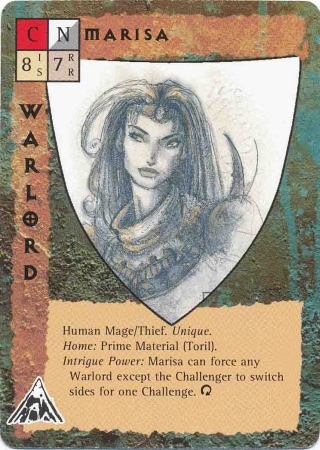
Magic-Users and Illusionists
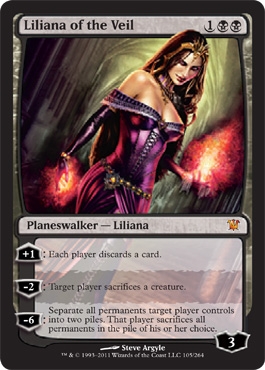
See the previous section
for the effects on spells in the these planes.
Mages && illusionists regain spells
normally in these planes provided that they bring along their spell books.
Clerics and Druids
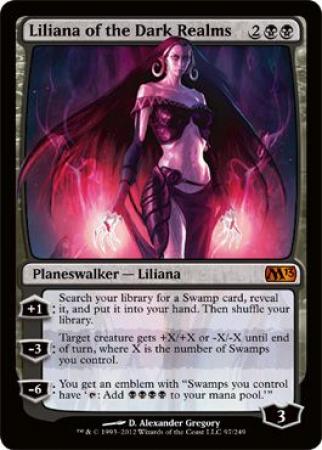
See the previous section for the effects
on spells in the Outer Planes. <>
As for other clerical and druidic abilities:
| Plane | Treat Cleric as |
| Elysium | 4 levels higher |
| Twin Paradises and Happy Hunting Grounds | 3 levels higher |
| Seven Heavens and Olympus | 2 levels higher |
| Arcadia and Gladsheim | 1 level higher |
| Nirvana, Concordant Opposition, and Limbo | Same level |
| Acheron and Pandemonium | 1 level lower |
| Nine Hells and Abyss | 2 levels lower |
| Gehenna and Tarterus | 3 levels lower |
| Hades | 4 levels lower |
This only applies to evil undead. Those
undead of neutral alignment
are treated as they are on the PMP. The
modifiers <>
are reversed for clerics attempting to
TURN a paladin
or command undead.
Thieves
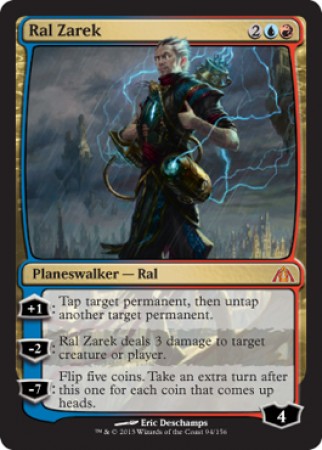
The abilities and their
sub-classes and split-classes
are generally unaffected by the outer
planes, but may be altered
by physical conditions in various realms
& planar layers.
Fighters
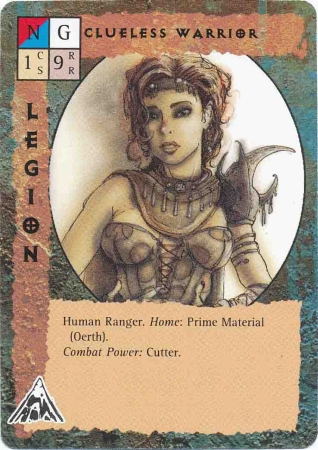
Abilities of fighters are unchanged in the outer planes.
Rangers
Rangers retain their
tracking and surprise abilities in the outer
planes. Those who have druidical spells
operate under the same
restraints as druids. The ranger benefit
against giantkind applies
to giants and similar creatures that are
encountered in the outer
planes (such as those that live in Jotunheim).
Barbarians
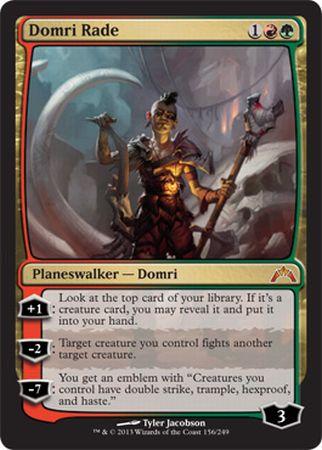
Of all the non-Prime
planes, barbarians are least threatened
by, and most at home with, the outer planes.
Some planes such
as Arcadia and the Happy Hunting Ground
are ideal for these
characters. Barbarians who remain in a
portion of the planes (no
larger than a realm,
as the interrealm borders smack of fell sorcery)
for sufficient time can treat that region
as well-known for
barbarian abilities.
Cavaliers
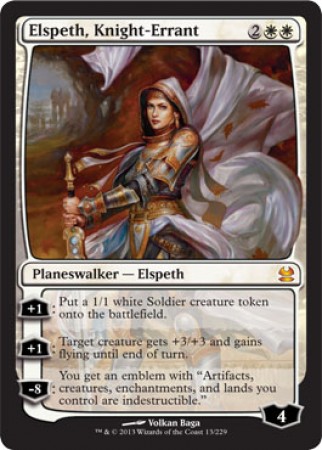
Cavaliers retain their
fighting abilities without handicap in the
outer planes. Horses brought into the
outer planes generally
function without hindrance (subject to
the nature of the realm the
cavalier is in).
Paladins
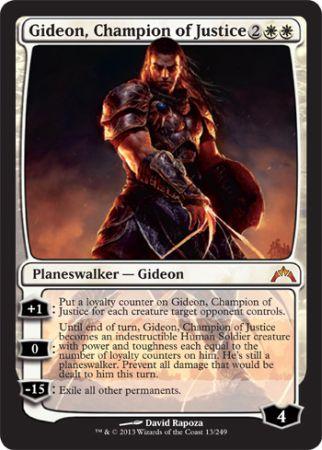
Paladin combat abilities
are unaffected by the outer planes.
Their other special abilities are modified
as follows:
* Detect evil is affected
as for the spell.
* Protection from evil
does not work against evil creatures in their home planes.
* Dispel magick (given
by a holy sword) works in the outer planes.
* Laying on hands can
be done for all creatures, whether natives or not.
This is an exception to the general rules
of necromantic healing spells.
* Similarly, the paladin
can cure disease as normal.
* Paladins of sufficient
level to turn undead and CAST clerical
spells do so with the advantages &&
disadvantages of the cleric, as given earlier.
* A paladin's mount
is unaffected in ability & HP. In
the upper planes of Law (Arcadia, Heaven,
and Twin Paradises),
the mount's INT is increased to average
and it
can speak with its owner in common or
the alignment language of LG.
* A holy sword carried
into the outer planes by a paladin does
not lose any pluses (in fact it regains
those pluses lost for travel into the Astral plane).
Monks
Monk fighting abilities
are unaffected by the outer planes.
Monk special abilities to speak with
animals and plants are
negated in the outer planes. The dreaded
quivering palm has no
effect on creatures that can be hurt only
by magickal items.
The inhabitants and
unique features that can be found in the
Planes of Power vary greatly from plane
to plane and are detailed
briefly in the general descriptions for
each plane that follow this
section. This section describes three
particular features that
span a number of palnes. The spell-crystals
can be found in
almost every layer of every plane, while
the river Styx flows
through the lower planes only, and Oceanus
in the planes of Elysium
and Olympus.
Spell-Crystals
These are the outer-planar
forms of the various spells used to
contact the outer planes or to bring creaturesfrom
those planes
into a PMP. To the traveller (and to most
native
creatures of less than 19 INT), these
crystals appear
identical. Their effects become apparent
only when a living creature
(of any plane) touches them.
These multi-faceted
crystals vary in shape from one inch to one
foot across and can be any color in the
spectrum. Size and color
apparently have no relation to the type
fo spell, though as noted,
creatures native to that AREA of INT 19
or higher can tell
which spell created a particular crystal.
Travellers are advised to
AVOID spell crystals. DMs should treat
such objects as rare ||
very rare encounters.
A crystal can represent
anything from a contact other plane or
similar divination spell to summoning
|| conjuration magick that
sucks the individual touching it into
a PMP. If that
PMP is the traveller's home plane, there
is no
effect SAVE that the individual returns
safely home (those astral
projecting travellers are bounced
randomly to another plane).
Being summoned to an alternate PMP results
in
the traveller being treated as an extra-dimensional
creature for
purposes of spell effects and abilities.
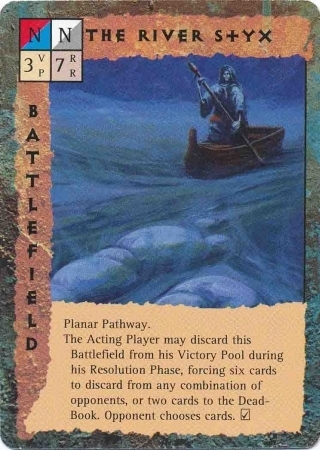
The river Styx is a
permanent conduit through the lower
planes, from the battlefields of Acheron
through the Nine Hells,
Gehenna, Hades, Tarterus, the Abyss, and
Pandemonium. It
functions in much the same way as the
Yggdrasil as a method of
transportation through these planes. Contrary
to speculation, the
Styx does not extend into the Astral plane,
though portals do
stand on the banks of the river, enabling
the boatmen of that fell
river to reach the Astral plane.
The Styx is always in
motion as it flows through the top layers of
each of the seven lower planes. The fifth
level of the Nine Hells,
which contains the world-ocean Stygia,
is connected to the Styx,
as are a number of the deeper layers of
the Abyss. The Styx does
not appear to have a origin or a final
outflow, nor does it MOVE linearly
to adjacent planes. Boatmen have been
able to pass from
Acheron to the Abyss in a matter of hours,
without passing
through the planes between them. The tangled
skein that is the
full flow of the Styx has not been measured.
Perhaps it cannot be
measured, seeing as it is an infinitely
long river that passes
through a number of infinite planes.
Those who touch, drink,
or are immersed in the Styx forget
their entire past life, including spells
and all alignments SAVE their
original one. A save vs. Spell is applicable,
with a successful
SAVE acting as a forget spell CAST by
a 15th-level wizard
(the previous <five> minutes before
touching, drinking, or immersion
are forgotten). A successful save protects
the traveller for <ten>
minutes (though he forgets that he has
successfully resisted the
effect of the river).
Those who are immersed
in the river have the standard chance
of drowning in the swift flow. There is
also a 50% chacne of being
dragged into another plane before reaching
the shore. The same
holds for boats, in addition to a 20%
chance of overturning for
small craft and a 10% chance for large
vessels.
Nonnative travellers
boating upon the Styx, or those attempting
to water walk || fly across it have a
40% chance of attracting the
attention of 5d6 hydrodaemons or 3d4 styx
devils (the latter if in Hell).
Most travellers on the Styx rely instead
on the
native boatmen of the planes, Charon and
the charonadaemons.
Charon can TAKE the
travellers anywhere on the Styx, as well as
into the Astral, Ethereal or Prime planes.
Transit time is 1d100 turns.
Normal encounters apply, and in these
encounters Charon
does not interfere unless his boat is
threatened.
Charonadaemons are lesser
daemons who work in the service of
Charon as boatmen. They share his knowledge
of the Styx, the
Astral, the Ethereal, and the various
Prime planes. The time for transit
by charonadaemon is longer, 1d10 days,
and normal encounters
occur. Like Charon, the charonadaemons
do not attack || interfere
with party actions. There is a 10% chance
per day of travel with a
charonadaeom that the boat picks up other
travellers (who are
native to the current plane and probably
hostile to the party).
Charon, if hired, does not stop for other
passengers.
Charon, the charonadaemons,
and the hydrodaemons are
found in the MM2 under the daemons
entry. Styx devils
are found in the FF tome under
devil. <edit>
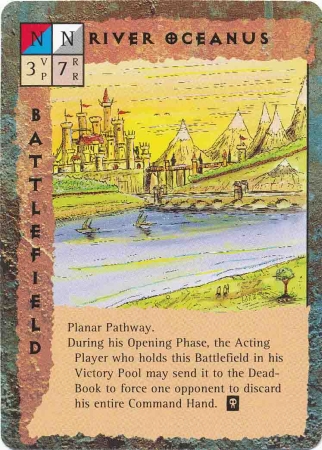
The river Oceanus links
the planes of Elysium, Happy Hunting Grounds,
and Olympus in much the same way that
the Styx links
the lower planes. Like the Styx, the Oceanus
disappears and
reappears a number of times in different
layers of the planes, but
it seems to follow a course that begins
in Thalasia, the third layer
of Elysium, flows through the second and
first layers of that
plane, then across the topmost layer of
the Happy Hunting Grounds,
then into the topmost layer of Olympus
to its final REST in
the second layer of that plane, which
is called Ossa.
The Oceanus is a more
natural river than the Styx, and no harm
comes to those who drink of it. The Oceanus,
however, does
pose all the normal dangers of a large
river, and does not have
the supernatural boatmen of the lifeblood
of the lower planes, the
Styx.
Space does not permit
a full description of every realm in every
layer of every plane--only a brief description
of each plane and its
major layers and realms
can
be attempted. Physical descriptions
and general information are discussed
first for the plane, followed
by any special rules that apply. Also
mentioned are the various portals
to and from each plane. Following this
are the major realms and general
areas that the outer planar traveller
can encounter, as well as
their native creatures and Great Deities,
according to the general
AD&D
campaign system. Only those Deities that have been
detailed in the Deities
& Demigods and Unearthed Arcana
tomes are
included for discussion, but this should
be interpreted as the
complete list of the Deities that inhabit
these planes. Those gods
specific to the established campaigns
of the AD&D game are best
detailed in their individuals realms.
Finally, a summary of the abilities
of new creatures is included so that judges
are not at a total loss in,
say, the Court of Shang-Ti.
The entries that follow
are intended as game settings for teh
AD&D game system. They are
not intended to describe, promote,
or ridicule any existing faiths or beliefs.
Those seeking accurate
and detailed backgrounds of the various
pantheons are directed
toward reference books on the subject,
as the material that
appears within is a mixed bag of pure
fantasy, game balance,
and mythological lore.
What is presented in
the preceding pages is a summary of the
realms, layers,
and planes that make up the known planes of
xistence. This is by no means the final
word on the subject, as
the nature of these infinite realms
defies any all-encompassing
treatises. There can be any # of realms
in a layer, so that a
third || fourth major pantheon can xist
in Olympus/Arvandor, ||
an evil deity created by the DM can dominate
a section of
Hell where no arch-devils rule. It is
also possible that there
are further layers beyond those that hav
been discovered and
reported. There may be an eighth heaven
or a third paradise that
is undiscovered || unreachable by the
spells && abilities known
to researchers. Gladsheim may have as
many layers as the
Abyss, but lacks the Abyssal method of
reaching them.
Finally, our conception
of the planes has grown with the
AD&D game. Original presentations
of the inner planes make no
mention of the quasi- and para-elemental
planes, and early discussions
of the outer planes leave out Concordant
Opposition.
There may be more such planes beyond the
scope of the model
of the planes presented here. There may
also be a different form
of Astral space between the outer planes
&& planes farther out,
or within the center of Concordant Opposition.
Even without new planes,
there are enough wild && unexplored
known lands to occupy the xtra-planar
traveller for years.
The demi-planes that float in the Ethereal
may be the size of
worlds, their only limitation being that
they are finite where the
other planes are infinite. Alternate PMPs
enable
travellers to visit worlds that are Earth-like
or not-so Earthlike,
familiar, hostile, and strange. The only
limitation to planar adventures
is the imagination of those involved.
This tome's purpose is
to help fire the imaginations of DMs and
players so that they
xplore the myriad planes of the AD&D
system.
Plane articles
Dear Editor:
When I noticed the article on "The Nine
Hells" I was very pleased. I had been looking
for some information on any of the Outer
Planes for some time. After reading the article,
one question came to mind. Are you planning
on printing any more articles on the Outer (or
Inner) Planes? I would appreciate it greatly to
see some articles on that topic.
Simon Dunsmoor
Clearwater, Fla.
(Dragon #79)
We aren't really "planning" more articles on
other planes of existence, simply because we
don't have any manuscripts on those topics
right now, and we learned a long time ago to
not anticipate that we'll get certain kinds of
submissions. But, as a general rule, we are partial
to other-planes articles; if and when we
receive such a manuscript that's well written
and comprehensive, we'll probably make a big
effort to publish it as soon as possible. With
the recent release of Monster Manual
II, the
body of information on other planes (particularly
the Abyss and Nirvana) has been greatly
expanded. Maybe some ambitious writer will
take advantage of that fact to turn out something
of the same quality (if not quantity) as
the "Nine Hells" material.
-- KM
(Dragon #79)
ScottyG wrote:
Gary, there's a rule
that first appeared in Q1 stating that magic items lose pluses based on
how many planes removed they are from the Prime. I thought I remember reading
on a recent thread elsewhere that you weren't fond of that rule, and would
have handled it differently had you had the opportunity to release some
planer material, but now I can't find the thread or the quote. Is that
correct, or is my memory off?
Scott

Your memeory ios correct. the value of magical weapons might remain unchanged, increase, or decrease on different planes. that is a comples matter and depends on the nature of the magic used to enchant each particular sort of weapon. fortunately, it is no longer something i need concern myself with, or I'd have a difficult task of classification and table-making on my plate :roll:
Cheers,
Gary
Bombay wrote:
Hey Gary
Just coming off a Total Party Kill(Demon webs at the pyramid with the drow/zombies.)
One real issue i came up with is the bonuses on items while on another plane, was hoping maybe you could shed some more light on a couple of items, would you give the saving throw or AC bonuses to the following.
Boots of striding and sprining(+1), Staff of power(+2), Cloak of Displacement(+2)
I initially ruled no, but was unsure, thanks.
bk

Off hand I'd say that all
three of those items would likely dfunction normally on a netherplane.
Nothing there would interfere
with their powers.
Cheers.
Gary
Quote:
Originally Posted by Soel
Hello, Gary!
I don't know if you've covered this question before (very likely, I'd guess,) but I would like to ask you about your initial inspiration for coming up with differing distinctions for the fiendish creatures. Mainly, what caused you (taking an assumption it was your idea to do this,) to separate the classical demon into demons and devils and others?
I can understand having a hell, but I guess another part of the question is, why were other lower planes of existence created?
Thanx in advance!

Howdy Soel,
The separation of demons
and devils followed rather naturally from the use of the alignments.
Demons in mythology are
typically depicted as being brutish and chaotic, while devils are more
orderly and cunning, so there you have the distinction.
The lower planes were a drawn from mythology as well, those being the realms of evil, the evil dead, and whatever was malign.
Cheers,
Gary
